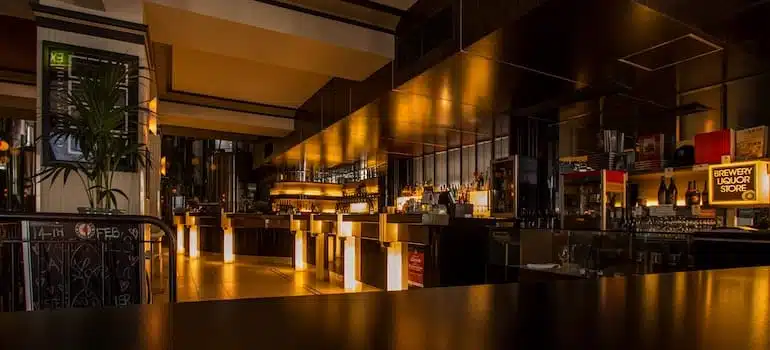How to move a family-owned restaurant in Miami Beach
Are you about to move a family-owned restaurant in Miami Beach? Yes, there are a lot of things to finish, from preparing the documentation to organizing a whole moving process. Luckily, you don’t have to do this alone. Our commercial movers Miami, residents love will help you every step of the way. So, check out some of the best tips and tricks for relocating your family restaurant.
Plan the restaurant move
When it comes to moving a family-owned restaurant in Miami Beach, the first step is to plan the relocation. Consider the reasons why you’re moving the restaurant, the timeline, as well as the budget. Create a list of the tasks that you need to complete and a timeline for every task. This will ensure that you complete the relocation on time and within the budget. These are some of the tasks:
- Deal with Documentation: Research local regulations about moving a restaurant. Miami Beach may have specific requirements for business relocations, such as permits and health inspections. Checking with the city’s official website or contacting local authorities will provide you with the necessary information.
- Find the Right Space: Choose a new location that supports your business goals. Consider factors such as foot traffic, local competition, accessibility for suppliers, and customer demographics. Visiting potential sites and speaking with real estate professionals specializing in commercial properties will aid in making an informed decision.
- Make a Floor Plan: Design a layout for your new space that optimizes kitchen workflow and dining area comfort. Utilize design software or consult with an interior designer who has experience with restaurant layouts to ensure efficiency and a welcoming atmosphere for your customers.
- Find Restaurant Movers: Hire movers who specialize in restaurant relocations. Restaurant movers will handle your kitchen equipment and dining furniture with care. Look for companies with good reviews and experience in commercial moves, and make sure they offer insurance and proper handling for delicate items like refrigeration units.
- Declutter the Food: Manage your inventory to reduce waste. Plan menus to use up perishables and consider donating unopened and non-perishable items to local food banks. This step will minimize the items you need to move and contribute to the community.
Additional steps to consider include
Besides the steps mentioned above, do the following:
- Notify Your Suppliers and Customers: Inform them about the move well in advance. Adjust your orders and communicate changes in location and potential disruptions.
- Update Marketing Materials: Change your address on all online platforms, social media accounts, and marketing materials. Consider a marketing push to attract customers to your new location.
- Set Up Utilities and Services: Arrange for the transfer or setup of essential services such as water, gas, electricity, and internet before you move to avoid any disruptions in operations.

Hire a moving company to move a family-owned restaurant in Miami Beach
Hiring a moving company like Miami movers can make the transition stress-free and smooth. Find movers who specialize and have experience with commercial relocations. Ask for references and check their reputations. Also, make sure to take a look at online reviews and ratings. And if you choose Pro Movers Miami and our restaurant movers, you can be sure that your relocation will be seamless.
Packing and moving the equipment
Pack all of the restaurant’s equipment. This includes kitchen appliances, dining room, and decor. Also, label each box and make sure to keep a detailed inventory to ensure all of your items are being moved. Make sure the equipment is packed properly for transportation to the new location. If you are unsure of how to pack your equipment, consider using white glove packing for the best protection of your equipment.
- Start with Non-Essentials: Begin by packing items that are not in daily use, such as extra dining sets, decor, and seasonal items. This helps clear space for you to work on packing more essential things.
- Furniture: Dismantle furniture if possible to save space and prevent damage during the move. Wrap table tops with moving blankets and use bubble wrap for edges and legs. Chairs can be stacked and wrapped in groups to protect their surfaces and structure.
- Appliances: Clean and dry all appliances before moving. Disconnect them according to the manufacturer’s instructions. Wrap them in moving blankets and secure with tape. Ensure that moving parts, such as doors and drawers, are fixed in place to avoid movement.
- Food: Perishable items should be packed last and moved quickly to maintain freshness. Use coolers with ice packs for transportation. Dry goods should be sealed in plastic bins or boxes, clearly labeled to ease the unpacking process at the new location.
Packing fragile restaurant items
When packing fragile items for a restaurant move, using the right packing supplies is crucial to prevent damage. First, gather essential materials such as bubble wrap, packing paper, foam sheets, and sturdy tape. For glassware, dishware, and delicate decorations, bubble wrap provides excellent cushioning, while packing paper is ideal for wrapping items before placing them into boxes to avoid scratches and chips.
Choosing the right types of moving boxes Miami companies provide is also vital. Use heavy-duty double-walled boxes for added strength and protection. Specialty boxes like dish packs are designed with thicker sides specifically for transporting dishes and glassware safely. For uniquely shaped or exceptionally fragile items, consider custom crating solutions to ensure they are secure during the move. Label each box clearly with “Fragile” and “This Side Up” to inform movers of the contents’ delicate nature, helping ensure careful handling throughout the transit process.

How to pack up mirrors and other luxury items
For mirrors, use painter’s tape to make an X across the glass. This helps to prevent shattering if the mirror is accidentally hit. Wrap the mirror in bubble wrap, securing it with packing tape, and then slide it into a flat, mirror-specific box that fits its dimensions snugly.
For other luxury items such as art pieces or high-end decor, wrap them in acid-free tissue paper followed by a layer of bubble wrap for cushioning. Place these items in sturdy, appropriately sized boxes and fill any gaps with crumpled packing paper to prevent movement. Always double-box by placing the initial package into a larger box lined with additional padding for maximum protection. However, it’s safer to hire luxury movers to take care of such fragile and valuable items.
You may need to use storage when moving a family-owned restaurant in Miami Beach
When moving a family-owned restaurant in Miami Beach, using storage units Miami can be a strategic decision. Common reasons to use storage include renovating the new space or decluttering the current location. Renovations might require temporarily storing furniture, décor, and non-essential equipment to keep them safe and out of the way. Similarly, decluttering before a move can help streamline the process, reducing the items you need to handle during the busy transition period.
When arranging a storage unit, consider the following tips: Choose a climate-controlled unit to protect sensitive items like electronic equipment and wooden furniture from Miami’s humidity. Use shelving units to maximize vertical space and keep items organized and accessible. Label all boxes clearly and create an inventory list to track what you have stored. This organization will save time and reduce stress when you retrieve your items or need to access them periodically during storage.

Update legal documents
Before you move a family-owned restaurant, make sure to update any legal documents such as contracts, insurance policies, and business licenses. Let vendors, supplies, and customers know about changing the location. Also, the restaurant’s website and social media should be updated with the new address and contact information. These are the documents to pay attention to:
- Business Licenses and Permits: Update your business license and any other permits, such as health department permits or liquor licenses, to comply with local regulations in the new area.
- Insurance Policies: Notify your insurance provider of the move to adjust your policy for property, liability, and worker’s compensation insurance based on the new location’s requirements.
- Lease Agreement: If you’re leasing the new space, ensure that your lease agreement is up to date and reflects all terms negotiated with the landlord.
- Vendor and Supplier Contracts: Review and revise contracts with vendors and suppliers to address the change in location, which might affect delivery routes, prices, and schedules.
- Employment Agreements: Update employment contracts to reflect any changes in workplace location that might affect employee commute and compensation.
- Tax Registration: Update your address with the IRS and local tax authorities to ensure all tax documents are directed to the right location.
Don’t move a family-owned restaurant in Miami Beach without moving insurance
Securing moving insurance is essential when you are about to move a family-owned restaurant in Miami Beach. This type of insurance protects your valuable assets—kitchen equipment, furniture, decor, and technology—from potential risks during the move, such as damage or loss. Without moving insurance, you could face significant financial burdens if items are damaged in transit, adding unnecessary stress and costs to the moving process.
When selecting moving insurance, assess the value of your items and choose a policy that offers comprehensive coverage. It’s important to understand the terms and coverage limits of the policy. Some policies cover the replacement cost of items, while others cover only the depreciated value. Make sure to document all items thoroughly with photos and descriptions before the move. This documentation will be crucial in case you need to file a claim. Investing in moving insurance gives peace of mind, ensuring that your investment in your restaurant’s assets is protected during the relocation process.

Prepare the new location
To move a family-owned restaurant in Miami beach as efficiently as possible, it’s a good idea to prepare the new location before you move the entire restaurant. Check if everything is working properly and see if something is maybe damaged. Additionally, do a bit of cleaning, however, keep in mind that you’ll have to clean a lot after the relocation. Here are some tips to help you create a welcoming atmosphere:
- Reflect Your Brand: The interior design should mirror your restaurant’s theme and brand. Choose colors, decorations, and furniture that convey your culinary style and target clientele. Whether it’s a cozy, rustic feel or a modern, sleek ambiance, consistency in your decor will enhance the dining experience.
- Optimize Layout: Arrange your seating to maximize space without overcrowding. Consider the flow of movement for both customers and staff. Ensure there is ample room for servers to move about and for guests to dine comfortably. The layout should also accommodate efficient service, with a clear path from the kitchen to the dining area.
- Lighting: Good lighting is crucial. It sets the mood and can dramatically alter the dining experience. Use a mix of lighting fixtures such as pendant lights over tables and softer ambient lighting to create a warm and inviting atmosphere.
- Art and Decorative Elements: Personal touches like artwork can add character to your restaurant. Choose pieces that complement the interior theme and make the space feel unique. Decorative elements like plants can add vibrancy and a sense of freshness.
- Functional Furniture: Select furniture that is not only stylish but also durable and easy to clean. Considering Miami Beach’s climate, materials that can withstand humidity are advisable. Furniture should also be comfortable to ensure guests have a pleasant experience.

Set up a new location
After you hire one of the moving companies Miami Beach, and move everything to the new location, it’s time to set everything up. Unpack the equipment and place it where it needs to be. Make sure it’s in working condition and make any necessary repairs before you open the restaurant. Set up the kitchen, dining room, and bar area in a way that is visually appealing and functional.
Advertise the move
After you prepare and set up the new location, it’s time to advertise the move. Give promotions to loyal customers to encourage them to visit your new location. Also, you can use flyers, social media, and other marketing materials to promote the move. Moving a family-owned restaurant can be a tough process. However, keep calm, and take your time, and with proper planning, preparation, and advertisement, the relocation will be smooth and easy. Good luck!
